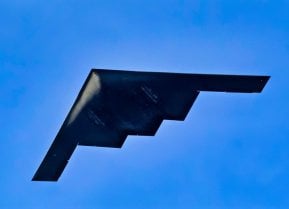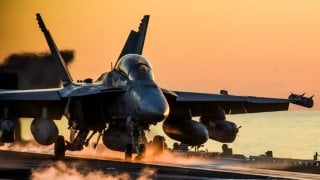How the U.S. Navy Can End Its Aircraft Carrier Nightmare
As the pinnacle of naval power, America's aircraft carrier fleet faces increasing threats from advanced missile technology, particularly from near-peer adversaries like China or Russia. With hypersonic, cruise, and ballistic missiles capable of targeting carriers, the sheer force of numbers poses a significant challenge.
Summary: As the pinnacle of naval power, America's aircraft carrier fleet faces increasing threats from advanced missile technology, particularly from near-peer adversaries like China or Russia. With hypersonic, cruise, and ballistic missiles capable of targeting carriers, the sheer force of numbers poses a significant challenge. However, carriers are not defenseless; equipped with formidable aircraft and supported by carrier battle groups, they create a defensive umbrella to mitigate threats. While adversaries aim to penetrate this defensive bubble, historical precedent shows the resilience of carrier battle groups. Through strategic planning and seamanship, US carriers strive to stay ahead in the ever-evolving landscape of modern warfare.
The Battle for Supremacy: Assessing Threats to America's Aircraft Carrier Fleet
The American aircraft carrier fleet is the strongest in the world. With 11 supercarriers and hundreds of aircraft, the U.S. Navy can project power to any part of the globe and respond to contingencies as they arise.
These aircraft carriers would be the central actors in any near-peer war with China or Russia. By containing or destroying them, an adversary would neutralize much of America’s expeditionary firepower. But how would they achieve this?
Today, missiles are the most serious danger to aircraft carriers.
A Shooting War and Aircraft Carriers
Advances in missile technology have increased the threat to carriers. Hypersonic, cruise, and even ballistic missiles now have the range, speed, and destructive capability to take out a carrier. Nor is the threat limited to a single well-placed, cutting-edge missile. Indeed, the Navy is concerned that a near-peer adversary like China could launch dozens, if not hundreds, of missiles against American supercarriers and destroy or sink them through the sheer force of numbers. The more advanced the incoming munitions, the greater the odds in favor of the attacker.
But it isn't just about math. It is also about calculated risks. You will not find an aircraft carrier exposed unless something has gone really wrong. To begin with, a carrier’s first line of defense is its aircraft. They can fly thousands of miles away from the mothership and take out incoming threats.
In addition, aircraft carriers don't fight alone. Supercarriers lead carrier battle groups that can include guided-missile cruisers, guided-missile destroyers, submarines, minesweepers, and support vessels. The smaller warships fan out and create a defensive umbrella around the aircraft carrier, protecting it from aerial, surface, and underwater threats.
Staying Alive
During combat, the goal of an adversary is to penetrate that defensive bubble and get to the carrier. If he can damage or sink the leader of the battlegroup and thus restrict or stop its air operations, then the carrier battle group is neutralized. This is easier said than done.
The last time an aircraft carrier was destroyed or sunk in major combat operations was during World War Two. Since then, the closest a military has come to sinking an enemy carrier was during the Falklands War, when the Argentine Air Force threw dozens of aircraft against a British task force in an attempt to sink two British aircraft carriers and establish air superiority over the battlefield. Although they sank several warships and support ships, the Argentines failed to penetrate the air defense umbrella completely and reach the aircraft carriers.
The goal of the carrier battle group is to stay out of danger – or limit its exposure to danger as much as possible while it works through the enemy’s capabilities. Numbers might create an advantage, but that advantage can be countered by good seamanship and proper planning.
About the Author
Stavros Atlamazoglou is a seasoned defense journalist specializing in special operations and a Hellenic Army veteran (national service with the 575th Marine Battalion and Army HQ). He holds a BA from Johns Hopkins University and an MA from the Johns Hopkins School of Advanced International Studies (SAIS). His work has been featured in Business Insider, Sandboxx, and SOFREP. Email the author: [email protected].


